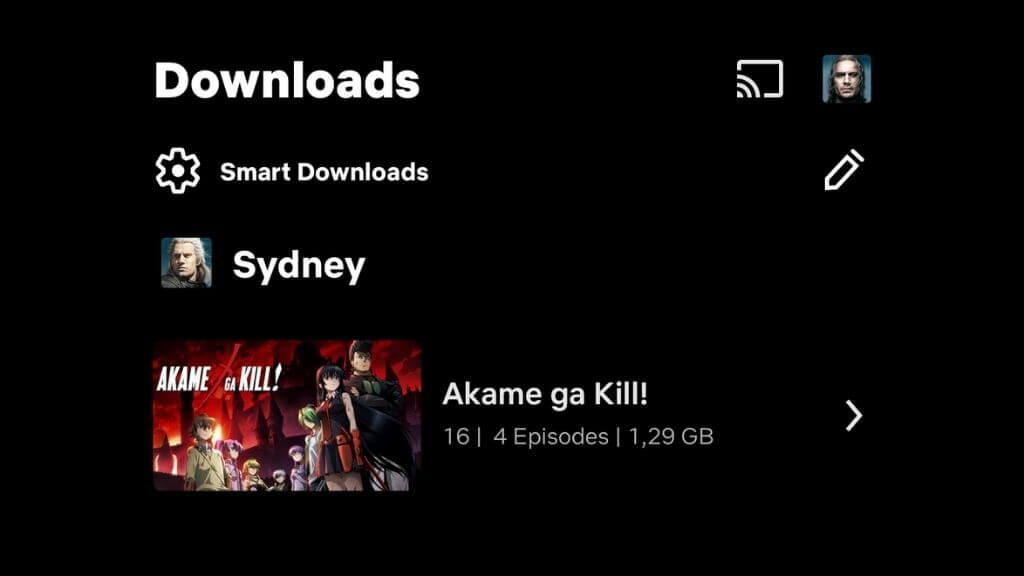- Λήψη συνδέσμου
- X
- Ηλεκτρονικό ταχυδρομείο
- Άλλες εφαρμογές
Netflix is the reigning champion of streaming services and its earliest successful pioneer. The company has shaped what streaming services do and how they do it, but you may be wondering how Netflix works.
With competitors like Amazon Prime Video, HBO Max, Apple TV +, Hulu, and more, Netflix has to run a sophisticated outfit. Let’s unpack the details.
Netflix’s History in a Nutshell
Netflix started life as an internet-based DVD rental business. It took the pain out of going to a video store and offered lenient rules with no penalties. When Netflix was founded in 1997, internet bandwidth was incapable of competing with the image quality of cable or broadcast TV. No one seriously considered that you’d get your TV shows through an internet connection!

Ten years after the company was founded, it began offering streaming services. Netflix was a hybrid service for years, offering both streaming and DVD (later Blu-ray) rentals by mail. However, as its streaming business started to take off and the content library grew, other competitors emerged.
The DVD part of the business is all but shut down now. Netflix is investing heavily in original programming since many owners of content that used to be on Netflix (especially Disney) have now pulled that content into their streaming platforms.
The Netflix Business Model
Netflix’s goal is to grow its subscriber base as much as possible. The company needs to expand to demonstrate a stable, long-term income stream from loyal monthly subscribers.
As it stands, Netflix offers on-demand video content with a mix of third-party and in-house content. In addition, Netflix content is spread across virtually all genres, and their original TV series and movies echo the same spread of genre offerings.
What’s notable about Netflix and how it creates original content is that the company gathers detailed information on subscribers’ viewing habits. Unlike TV ratings, which only give a crude idea of what people like to watch, Netflix knows exactly what you watch, how you watch it, and even the exact point in a show or movie you lose interest in.
Using this detailed data, the company has created some smash-hit original TV that’s only on Netflix and later sold on physical media. Not to mention all of the merchandise and tie-in media that go with successful franchises such as Stranger Things or The Witcher. Shows like House of Cards and Netflix Original documentaries like the phenomenal My Octopus Teacher are key to getting people through the door and keeping them there.
Netflix Subscription Plans
Netflix offers several plans that have varying prices. In some regions of the world, they also offer plans that aren’t available in the USA. For example, in South Africa, there’s a (roughly) $3 mobile Netflix plan for individuals, limiting the service to a smartphone or tablet at SD (Standard Definition) quality.
There are three plans common to all regions, although pricing does vary by region. The Basic plan allows for a single stream at SD quality. The Standard plan allows two streams at HD (High Definition) quality, and finally, the Premium plan allows four simultaneous streams at UHD (Ultra HD 4K) quality.
UHD TVs are becoming more and more common, so it’s unfortunate that 4K quality is locked into the four-screen tier if you’re living alone or are in a household with fewer than four people. This is possibly one of the key reasons Netflix users share accounts with family and friends, although Netflix is clamping down on this practice.
If you want to pay less for Netflix, check out how to get Netflix for free or at a reduced price.
Netflix Downloaded Content
Since we’re often cut off from our home broadband connections when traveling, commuting, or simply at a place without decent internet, it’s great to know that you can download Netflix content to your device and watch it later.
You cannot download every piece of content on Netflix since the license holder of every piece of content has to provide permission for download rights.
But you can download all Netflix original content as far as we can tell, and if you go to the download section of the Netflix app, you can filter content to only show those that can be downloaded.
Netflix also offers a Smart Download function, where the next episode in a series you’re watching is automatically downloaded when your device is on WiFi. Netflix will also preemptively download shows that it thinks you might want to watch. So if you’re ever stuck at the DMV unexpectedly, you’ll have something to pass the time ready and waiting.
Netflix Mobile Gaming
Netflix is expanding its repertoire beyond streaming video content and into the mobile gaming world. Every Netflix account tier includes access to the company’s mobile gaming titles and can be accessed from the gaming tab in the mobile app.
Whether the titles currently available are worth playing when compared against the likes of Apple Arcade is debatable. But if you’re already a Netflix subscriber, it can’t hurt to give them a try.
Netflix Streaming Technology
Netflix is a pioneer of on-demand video streaming technology. If you’ve ever used the service on a slow connection, you may have been impressed with how watchable it is even when the internet isn’t great.
Netflix uses an “adaptive bitrate” streaming method that dynamically changes the video quality at a given resolution as network conditions change. Depending on network conditions, it can also switch seamlessly to a lower or higher resolution stream.
Each video stream on Netflix is also included in various formats to best match the platform the content is streamed on. For example, on an iPad or iPhone, Netflix uses the H.264 video codec, but on UHD (4K) devices, it uses H.265 HEVC (the High-efficiency Video Codec).
Netflix keeps the exact details of its technology secret since it’s a major competitive advantage. Still, you can see their quality sensing system in action by activating the quality metric overlay.
This differs from app to app. For example, you can see the current streaming quality on a Samsung smart TV by pressing the “Info” button on the remote. If you’re on a PC or Mac, you can bring up the full live stats for the current video by pressing Ctrl + Alt + Shift + D or Control + Options + Shift + D on a Mac.
Netflix Global Network Architecture
The hardware infrastructure to support a massive bandwidth and processing hungry service like Netflix is impressive. It’s also costly, so Netflix doesn’t buy, build, or maintain its own data centers. Instead, it pays Amazon for cloud services, which might seem weird considering that Amazon is also a direct competitor to Netflix with its Prime Video service.
Then again, Amazon is one of only a handful of companies with the expertise and technology to support major cloud services. You may be surprised to learn that many companies are customers of Amazon, Microsoft, and Google, who’ll happily sell cloud services to anyone, including each other.
The Netflix CDN Solution
The exact hardware changes with time as cloud providers upgrade and improve their systems. One of the key reasons to use a company like Amazon is its global presence. A service like Netflix needs a CDN or Content Delivery Network. These are physical data centers spread across the world.
When a user in a specific region requests a movie or episode, the content is served by the data center nearest to that user. This means they get the snappiest response times with excellent bandwidth. Meanwhile, Netflix doesn’t have to pay for more expensive international bandwidth.
Modern CDNs are sophisticated. For example, if you’re the first person in your region to request a specific piece of content, you’ll likely be served by a CDN node that’s further away, but in the background that content is cached to the CDN unit closer to you so that in future local users will get their more quickly.
Netflix Edge and Computing
You may have heard the term “edge computing” mentioned in the same breath as Netflix, but it turns out that the company is not yet actually using this cloud computing method.
Edge computing is a way to distribute the computing power needed to deliver content and services to users. Wherever processing is required, some of it is done on servers nearest the user.
This sounds like a CDN, and there’s some overlap between the concepts. However, CDNs store cached data at the edges of a network. In Netflix’s case, they use devices called Open Connect caching servers, which are often installed with ISPs (Internet Service Providers), so that the ISP’s network can serve them.
While having content hosted at the edge of a network is an advantage shared by both CDNs and edge computing, the latter also offers lower latencies that help real-time applications such as online gaming, live streaming, and cloud applications. On-demand services like Netflix wouldn’t see any further benefits beyond what their CDN already offers.
That being said, Netflix is interested in 5G network technology and edge computing to improve their actual original content production. Since it would make it much easier for on-location crews to send raw footage to editors or executives who could be on the other side of the planet!
Netflix Software Clients
Netflix has many different software clients to serve content on various devices. Some software clients are end of life, such as the one for the Sony PlayStation 3. Gaming consoles like Xbox One and PlayStation 4 are still supported.
As we mentioned above, the encoding method for sound and video can differ depending on what sort of device you’re using Netflix. For example, most modern devices such as set top boxes (e.g., Fire TV, Chromecast, or Roku) and smartphones have hardware decoders to handle H.264 video.
There are Android and iOS apps, smart TV apps for Android TV, Samsung’s Tizen, and just about any smart TV brand that uses something other than Android. There is no dedicated software client for Windows and macOS, but you can watch Netflix through a web browser.
How Netflix Protects Its Content
Piracy is a problem for content creators of all types. Netflix combats it with different DRM (Digital Rights Management) tools to prevent unauthorized copying of its streams. Each type of DRM is matched to the device’s operating system that it runs on since they have different requirements.
Of course, a casual glance at torrenting sites like The Pirate Bay shows that none of these protections work since Netflix content is readily available. After all, only a single hacker has to defeat the DRM for a protection-free copy to spread across the internet like wildfire.
Netflix Regional Restrictions
While it seems a little strange to restrict digital content to specific geographical areas, many legacy aspects of film and TV distribution still apply to modern streaming services.
In the early days, Netflix was only available officially in the USA. Users outside the USA could use a VPN or Smart DNS service to get around the regional restrictions, and Netflix didn’t seem bothered by it. The company seemed perfectly happy to take payments from non-US credit cards! After Netflix finalized all the complex licensing needed to roll out internationally, they rapidly blocked VPN users.
The Netflix catalog in other regions started with few titles, but today Netflix offers plenty of content wherever you may be. In fact, non-US subscribers sometimes get content that US users need to find elsewhere. Such as Star Trek Discovery, which was only on Netflix outside of the US until they removed it.
VPN providers have figured out how to get around the Netflix blocks, but there isn’t that much incentive to do it anymore.
A Word on Netflix ISP Throttling
That’s a lot of information on how Netflix works, but it’s worth noting how Netflix sometimes doesn’t work. Streaming services like Netflix are massive bandwidth hogs, and some ISPs have taken to throttling traffic from Netflix.com, limiting the video quality their customers can get. So even if you’re paying for UHD, you may be limited to HD instead.
There’s nothing Netflix can do about this directly other than negotiate with ISPs, but the company has launched its own internet speed testing service named Fast.com. This tests your internet speed to the Netflix website domain, and if it’s much slower than the broadband speed you’re paying for, you may want to have a word with your service provider.
from Online Tech Tips https://ift.tt/Px17Tdr










Σχόλια
Δημοσίευση σχολίου